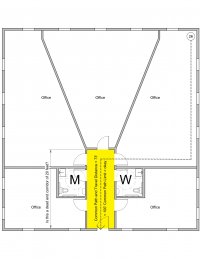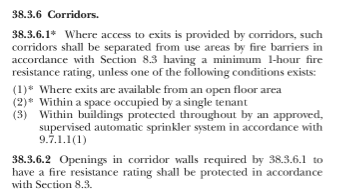BayPointArchitect
Sawhorse
My jurisdiction enforces both the NFPA 101 and the IBC.
The dead end corridor limit for a new non-sprinkled office building is only 20 feet according to NFPA 101 Table 7.6.
The IBC section 1018.4 has the same dead end corridor limit of 20 feet. But that paragraph does start with, "Where more than one exit or exit access doorway is required..."
So can I conclude that we may dismiss anything that might otherwise be construed as a dead end corridor within a building that requires only one exit?
Thanks again
ICC Certified Plan Reviewer
NFPA Certified Fire Plan Examiner
The dead end corridor limit for a new non-sprinkled office building is only 20 feet according to NFPA 101 Table 7.6.
The IBC section 1018.4 has the same dead end corridor limit of 20 feet. But that paragraph does start with, "Where more than one exit or exit access doorway is required..."
So can I conclude that we may dismiss anything that might otherwise be construed as a dead end corridor within a building that requires only one exit?
Thanks again
ICC Certified Plan Reviewer
NFPA Certified Fire Plan Examiner


